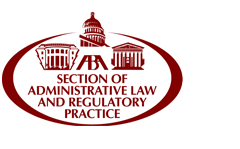Article Title
Setting Labor Policy Prospectively: Rulemaking, Adjudicating, and What the NLRB Can Learn from the NMB's Representation Election Procedure Rule
Volume
63
Issue
4
First Page
853
Abstract
For years, scholars have criticized the National Labor Relations Board’s (NLRB’s or Board’s) reliance on adjudication rather than rulemaking. The use of adjudication rather than rulemaking is problematic for the NLRB because of continued “policy oscillation”—frequent changes in agency policy between presidential appointments—in Board adjudications, which “sows disrespect for the agency.” Additionally, the NLRB’s sole use of adjudication precludes public participation, encourages fact‑specific policymaking, and fosters the problem of agency nonacquiescence. Scholars argue that by rulemaking, the NLRB could ameliorate the appearance of political bias, articulate clear precedents, and encourage public participation in policymaking.
Despite the promise of clearer precedents and a more politically neutral appearance, the NLRB has largely refrained from notice‑and‑comment rulemaking. The NLRB claims that rulemaking procedures are too rigid for union policymaking, which must be quick to respond to specific fact patterns. This raises ossification of rulemaking issues, including problems posed by the Regulatory Flexibility Act (RFA) and the Congressional Review Acts (CRA), and the threat of judicial review. The threat of congressional intervention also influences the NLRB's decision to refrain from rulemaking.
There has been renewed scholarship criticizing the NLRB’s avoidance of rulemaking and suggesting that the current Board is in a good position to begin rulemaking. Heeding scholars’ pleas, on December 22, 2010, the NLRB issued its first notice of proposed rulemaking since its only recent successful rule in 1989 defining bargaining units in healthcare facilities.
In light of this renewed discussion about the benefits of rulemaking in the inherently political unionization context, this Comment will examine the recent and controversial representation election procedure rulemaking by the National Mediation Board (NMB)—the federal agency charged with overseeing labor relations in the railway and airline industries—as a point of comparison for the NLRB. Both agencies are bipartisan, independent, and facing the challenge of regulating in a highly political industry. In November 2009, the NMB proposed a change in the way it counts union election ballots. For seventy‑five years, the NMB’s election procedure required that a majority of all eligible voters in the voting class cast valid ballots in favor of representation to certify the union. Under the new rule, the NMB counts a majority of the valid ballots actually cast to determine if the class has elected a representative, a process which conforms to NLRB voting procedures. The NMB engaged in notice‑and‑comment rulemaking under the Administrative Procedure Act (APA), invited written submissions, and even held a public hearing on the issue before adopting the final rule on May 11, 2010.
Controversy surrounded the rule change—the agency received almost 25,000 comments during its sixty‑day comment period and heard thirty‑one witnesses at the open hearing. Those who opposed the rule argued that the NMB rushed through the notice‑and‑comment process just before Delta, whose employees were traditionally anti-union, merged with Northwest, a traditionally pro‑union organization. Additionally, NMB Chairman Elizabeth Dougherty dissented from both the proposed and final rules, complaining that as the minority Republican member of the NMB she was given insufficient time to review the rule before its publication. Ultimately, the NMB successfully defended itself in the U.S. District Court for the District of Columbia against arguments that it lacked statutory support to alter election procedures, that the majority prejudged the issues involved, and that it lacked factual support to justify the policy change. Although the Air Transport Association (ATA) has appealed the decision, the rule has also withstood a Senate joint resolution vote to return to the old election procedures.
Given the similarities between the NMB and the NLRB, the NMB’s successful rulemaking attempt demonstrates that the NLRB has the wherewithal to engage in notice‑and‑comment rulemaking, and it should look to the NMB’s procedures as a guideline for conducting rulemaking in the future. This Comment analyzes the predictive and instructive value of the NMB’s representation election procedure rulemaking for the NLRB.
